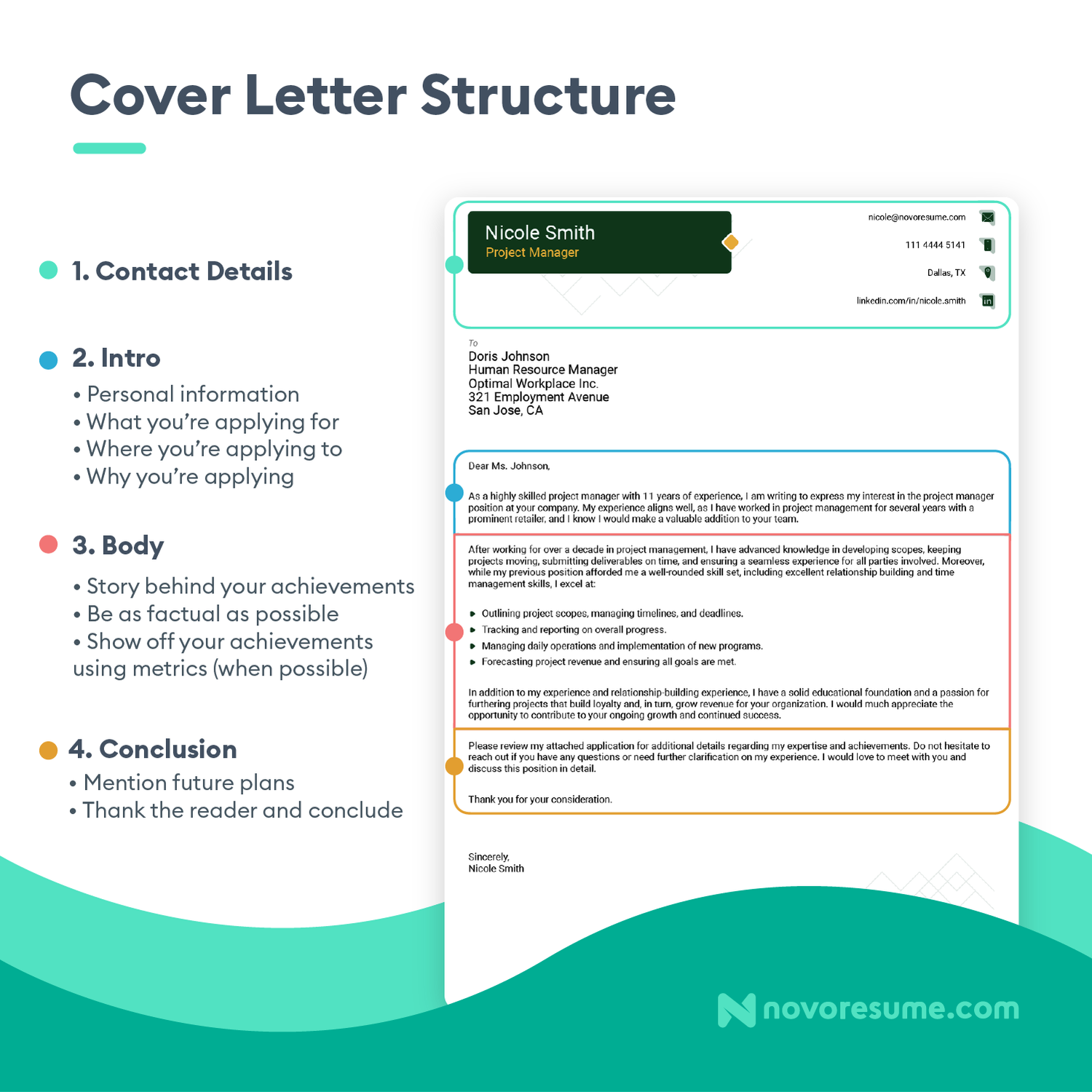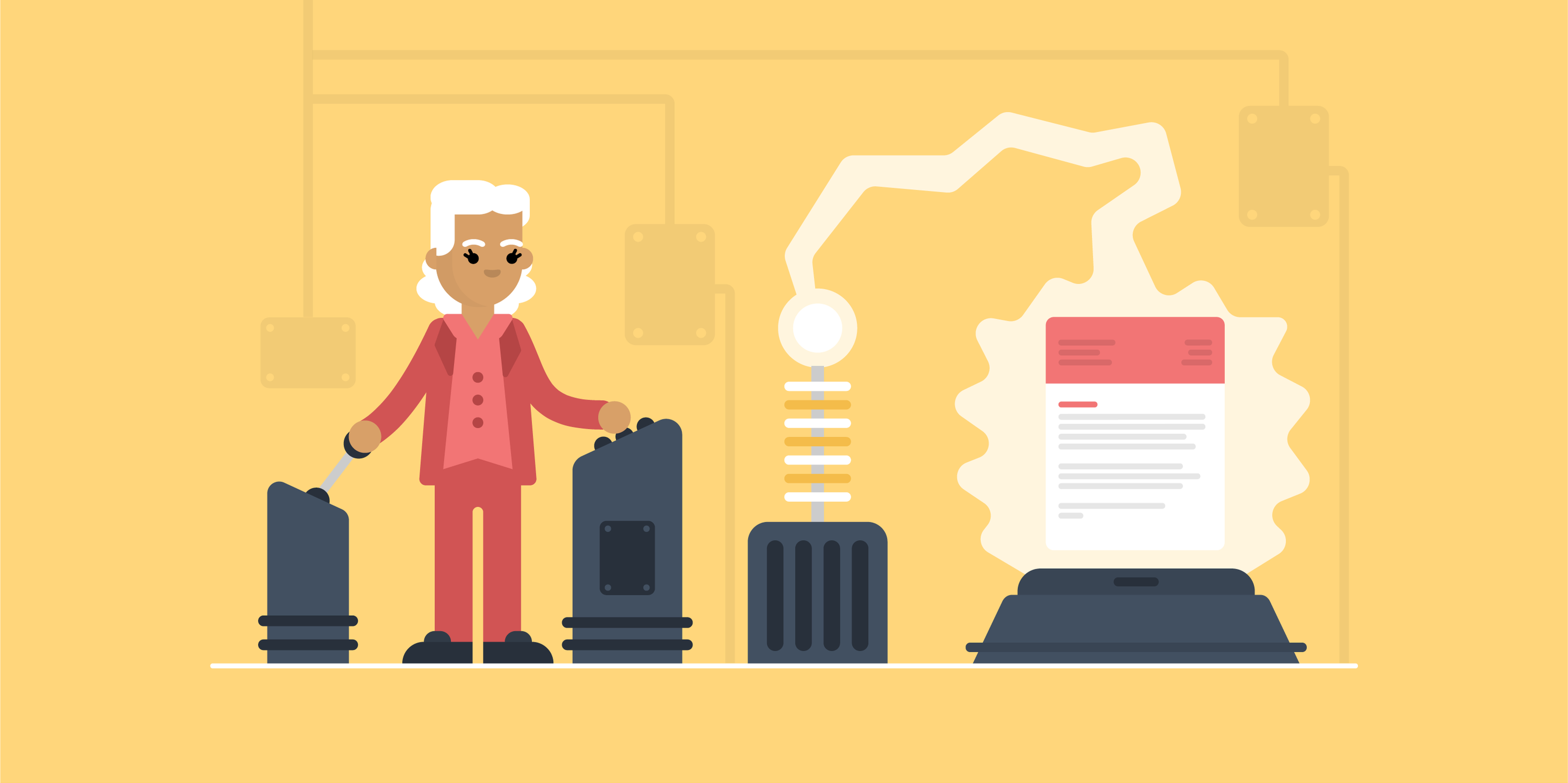The days you solved puzzles and tinkered with gadgets are long gone.
You've always had a knack for engineering, and now you’re turning your passion into a career.
But as you’re applying for your next gig, you’re having trouble writing your engineering cover letter.
No worries.
Whether you’re an entry-level engineer who doesn’t know the basics of writing cover letters or a seasoned professional who’s not good at putting their professional experience into words, we’ve got your back.
In this article, we're going to guide you through the process of creating a perfect engineering cover letter, one step at a time.
Here’s what we’ll cover:
- Professional Engineering Cover Letter Example
- 5 Simple Steps to Craft an Impressive Engineering Cover Letter
- 3 Essential Engineering Cover Letter Tips
Let’s dive in!
Engineering Cover Letter Example

5 Steps for the Perfect Engineering Cover Letter
You've seen what a great cover letter looks like, and now it's time to create your own.
It's as simple as the following steps, starting with:
#1. Put Contact Information in the Header
Start your engineer cover letter with your contact information, just like you would on your resume. Here's what you should include:
- Full Name: Place your complete name at the top of the page.
- Job Title: List the exact job title required by the specific engineering position you're applying for (e.g. “Electrical Engineer”). Clarity here helps streamline the hiring process.
- Email Address: Opt for a professional and straightforward email address, typically a combination of your first and last name.
- Phone Number: Ensure your phone number is accurate, including the dialing code if applying for positions abroad.
- Location: Mention your city and state or country. If you're open to remote work or relocating, make that clear on your engineering resume.
- Relevant Links (optional): Include any pertinent websites or social media profiles, such as LinkedIn.
Next, it's time to provide the hiring manager's information:
- Company Name: Specify the company you're applying to.
- Hiring Manager's Name: Whenever possible, identify the hiring manager for the department you're interested in. Research the job ad, the company's website, or LinkedIn for this information.
- Hiring Manager's Title: If you find that the hiring manager for this specific job ad holds a department head role, use that title instead of just "Hiring Manager."
- Location: Include the city and state or country, particularly for globally operating companies. You can also add the company's street address for precision.
- Email Address (optional): If available, include the hiring manager's email address.
- Date of Writing (optional): Consider adding the date you composed your cover letter for that extra touch of professionalism.
#2. Address the Hiring Manager
Once you've included all the necessary contact information in your engineer cover letter, it's crucial to address it to the right person.
For starters, avoid the generic and dated "To Whom It May Concern."
Giving some thought to how you address the cover letter can make a positive impression on the hiring manager. Here's how to do it:
Start by doing some research. Check the job posting, the company's website, or their LinkedIn profiles to identify the hiring manager for the department you're interested in. This way, you can find their name and email address.
Next, address them formally. Consider using "Ms." or "Mr." followed by their last name. If you're unsure about their gender or marital status, you can simply use their full name. For example:
- Dear Mr. Rodriguez,
- Dear Taylor Anderson,
In cases where you can't find specific information about the hiring manager or the head of the engineering department, you can address your letter to the department or the company in general:
- Dear Engineering Department,
- Dear Engineering Hiring Team,
- Dear Human Resources Recruitment Team,
- Dear Head of Engineering Services,
#3. Write an Eye-Catching Opening Statement
Hiring managers typically spend around seven seconds reviewing a candidate's application before deciding whether to continue reading it. This means your opening paragraph is your chance to grab the hiring manager’s attention and get them to read your cover letter.
Begin by introducing yourself and expressing your genuine interest in the role. Demonstrating your passion for the engineering field or the specific job can capture the hiring manager's attention.
Researching the company is also essential. The more you learn about the employer, the better you can talk about how you’d fit with the company culture. This conveys to the hiring manager that your application is not random; you're genuinely enthusiastic about this particular position.
Depending on your experience level, you can also start your cover letter by highlighting a significant achievement or showcasing the skills that make you an ideal fit for the role.
However, keep this paragraph concise to ignite the hiring manager's curiosity and encourage them to explore the details in your cover letter further.
Check out our other cover letter examples to write an inspired opening paragraph.
#4. Use the Cover Letter Body for the Details
You’re meant to use the body of your cover letter to talk in detail about why you are the perfect candidate for the position.
The key here is to avoid rehashing your engineering resume. This is where you can talk in more detail about skills and achievements you didn’t have space for on your resume.
Your mission is to persuade the hiring manager that you are the standout choice among a sea of applicants. To achieve this, you can highlight a couple of your most notable engineering achievements, and elaborate on the skills that helped you and the positive results your work has had.
Customizing your cover letter to align with the job posting is essential. Spotlight the specific skills the company is seeking and articulate how you can make valuable contributions to their team. For instance, if you're aiming for a position in a tech-focused engineering firm, emphasize your tech-related proficiencies rather than unrelated experiences.
Demonstrating your familiarity with the company, its business model, or its industry can be a tremendous asset. If you possess knowledge of the company's products or services, ensure it's mentioned in your cover letter to convey your alignment with their mission and corporate culture.
To keep this important cover letter part perfect, avoid these common cover letter mistakes at all costs.
#5. Wrap It Up and Sign It
Concluding your cover letter professionally is just as important as starting on the right note.
Your goal is to leave a positive, lasting impression on the hiring manager and reinforce their confidence in your suitability for the engineering role.
In the conclusion, confidently reiterate why you are an excellent fit for the engineer position or highlight the skills that you believe distinguish you from other applicants.
Then, you can optionally include a call to action. Encouraging the hiring manager to take the next step, such as arranging a conversation to explore your application further, can enhance your chances of securing an interview.
Last but not least, conclude with a signature line. Choose something personal but still professional, followed by your full name. Here's an example:
Please don’t hesitate to contact me using the provided email or phone number to schedule a discussion. I eagerly anticipate the opportunity to delve deeper into my application at your earliest convenience.
Best wishes,
Jane Doe
If you feel that "Best wishes" is overused, consider these alternative sign-off options:
- Sincerely,
- Kind regards,
- Respectfully yours,
- Thank you for your consideration,
Simply choose the sign-off that aligns with your style and the tone of your engineering cover letter.

3 Essential Engineering Cover Letter Tips
You've covered the fundamentals, and now it's time to elevate your engineering cover letter with some cover letter tips.
Here are our top three:
#1. Match Your Resume
If you're truly committed to landing the gig, your job application needs to look as good as it reads.
Make certain that the formatting and layout of your engineering cover letter align seamlessly with your resume. This will not only show off your sense of professionalism but also highlight your attention to detail.
Ensure that your text and contact information are neatly arranged on the page, maintain uniform font styles and sizes, and set the right margins and line spacing to keep your cover letter on a single page.
This can set you apart from other candidates and underscore your genuine dedication to the position.
Or Use A Cover Letter Template Instead
As an engineer, you likely have better things to do than create a matching cover letter and resume.
There’s a solution to this.
Try out our free resume templates to create the perfect engineering resume.
Then, pick a cover letter template that matches it visually to save time and effort.
Our templates are created in collaboration with hiring managers around the world, which means they hit industry standards right on the mark. You save time and get a matching cover letter for your resume that looks absolutely professional. Sweet deal, isn’t it?
#2. Emphasize Your Achievements
Highlighting your achievements in your engineering cover letter is a smart move.
It's not just about listing them, though; it's about showing how they make you the ideal candidate for the job. This helps hiring managers see the value you can bring to their team.
So, be sure to integrate your achievements seamlessly into your cover letter, connecting them to the role you're pursuing. This way, you'll leave a lasting impression of your capabilities.
#3. Keep It Relevant
In your engineering cover letter, being concise is key.
It's not about overwhelming the hiring manager with lengthy paragraphs; it's about providing relevant information efficiently. Employers appreciate cover letters that get to the point and directly address the qualifications and skills that make you a great fit for the job.
So, keep it relevant, and you'll make a strong and lasting impression.
Key Takeaways
Here you go!
Now, you're all set to craft the ideal engineering cover letter and secure that role you've been eyeing.
For clarity, let's revisit the key takeaways:
- Ensuring your engineering cover letter aligns with your resume provides a cohesive, professional appearance. Consider using a resume and cover letter builder for the seamless creation of both documents.
- Organize your cover letter with a captivating opening, followed by detailed elaboration. Utilize the main section to emphasize your engineering skills, past projects, and why you're the perfect fit for the role.
- Review the job listing for specific engineering skills and relevant keywords. By aligning with the employer's expectations, you'll stand out and make a lasting impression.
- Never underestimate the importance of proofreading. A small oversight might jeopardize your chance, so double-check for errors before submission.


